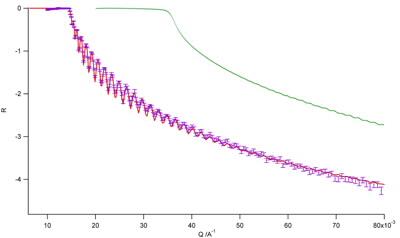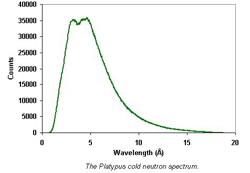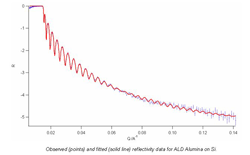

Applications - Platypus
Applications
Neutron reflectometry can be used to:
- Study soft matter in biological and chemical science:
- Examining how surfactants work (substances that affect surface characteristics e.g. waterproofers, emulsifiers, lung surfactants in premature infants.
- The interactions of proteins and enzymes with biomimetic cell membranes (synthetic membrances used to model those in living cells). - Deliver critical information about polymer film composition, chemical properties and the quality of the film in conjunction with other surface sensitive techniques.
- Nanoscale plasma polymer surface coatings are key elements used in the development of new biotechnologies for tissue growth, bio-functionalisation, surface passivation and anti-biofouling, protein and antibody biosensors. - Study processes occurring at surfaces and interfaces such as adsorption, corrosion, adhesion and inter-diffusion between layers to solve important industrial problems.
- Study thin-film magnetic devices to be used in future generations of computers, including magnetoresistive read head sensors and data storage films in hard drives as well as non-volatile magnetic random access memory devices.
Recent results
We have now demonstrated that Platypus can deal with films out to 325 nm with sufficient resolution to get a very accurate determination of the total thickness.

The image shows Atomic Layer Deposition (ALD) Al2O3 film on Si.

In July 2008, Platypus took its first data from the OPAL reactor. Early weeks were focused on developing instrument control and data-acquisition systems and collecting the first time-of-flight neutron spectra for the cold guide 3 (Platypus’ location) shown in the figure.

At the heart of Platypus is the Astrium disc-chopper system which allows the wavelength resolution of neutron pulses to be tailored to suit the system under study. By decreasing the Dl/l resolution from 1.3% to either 4.5% or 10%, the neutron flux increases 3 times and 7 times, respectively. The figure shows the Platypus neutron spectrum for different disc-pair combinations.

We have measured the reflectivity of several thin solid-films (polymers, metallic multilayers and gold). Below you see very early reflectivity data from a 340 Å spin-coated polystyrene film on Si.

Detector image of reflectivity data collected from a ~1450 Å alumina film on Si (produced by Atomic Layer Deposition - ALD) are displayed in the figure

Observed and fitted reflectivity data from this film are shown in the next figure (Dl/l~1.3%), demonstrating that Platypus is capable of measuring relatively thick films: d = 1452 Å; scattering-length density (SLD) = 4.43x10-6 Å-2; s = 5.3 Å.

Data from a Ni/Ti multilayer “Bragg Mirror” of 25 bilayers (Ni: 113.4 Å / Ti: 79.9 Å) were collected at (Dl/l~1.3%)
First measurements on a free-liquid surface of D2O were also successful, but there are plenty of tuning and commissioning tasks ahead of us.